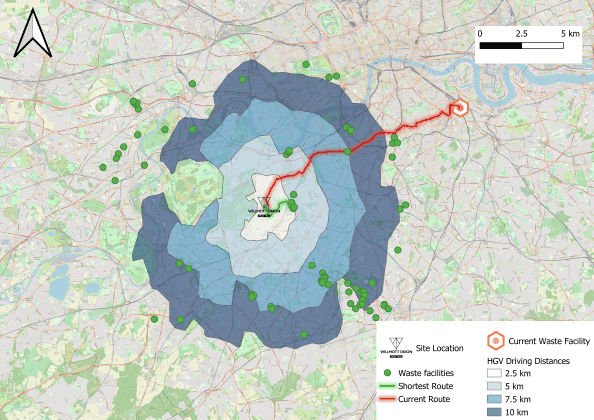At this contractor, typically the decision to select a waste management company will be determined by which member of the supply chain has put themselves forward to cover a certain postcode area. Whilst location is generally the main factor behind a waste companies decision to provide their service in a select area, many are happy to travel significant distances which brings with it a significant carbon footprint.
At a recent project they challenged the status-quo, and used GIS mapping software to create an isochrone map (iso meaning equal, and chrone meaning time) to determine whether the current waste contractor was a suitable choice from a purely carbon emission related perspective. As given the current climate crisis they have a responsibility to reduce their carbon emissions wherever possible. The findings of the exercise demonstrated that the current waste provider was travelling approximately 16km each way, with approximately 18kgCO2e being released with each round trip.
Data from the Environment Agency was then imported into the GIS package, and they were able to identify another waste facility that was less than 3km from site, when travelling in a HGV. By utilising this local waste contractors services they reduced the carbon footprint of each waste transfer by 15kgCO2e, (the equivalent of charging a smartphone over 1,900 times) and ensured all waste was diverted from landfill. When considering the amount of waste that typically leaves a construction site this represents a significant carbon reduction over the projects lifetime.
Did you find this article helpful?
Please rate this article

Loading...





